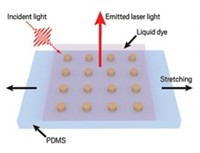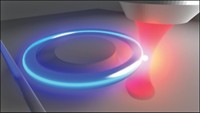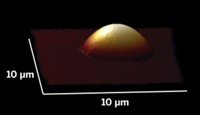Advertisement
Grab your lab coat. Let's get started
Welcome!
Welcome!
Create an account below to get 6 C&EN articles per month, receive newsletters and more - all free.
It seems this is your first time logging in online. Please enter the following information to continue.
As an ACS member you automatically get access to this site. All we need is few more details to create your reading experience.
Not you? Sign in with a different account.
Not you? Sign in with a different account.
ERROR 1
ERROR 1
ERROR 2
ERROR 2
ERROR 2
ERROR 2
ERROR 2
Password and Confirm password must match.
If you have an ACS member number, please enter it here so we can link this account to your membership. (optional)
ERROR 2
ACS values your privacy. By submitting your information, you are gaining access to C&EN and subscribing to our weekly newsletter. We use the information you provide to make your reading experience better, and we will never sell your data to third party members.
Analytical Chemistry
Nanomagnets Under The Microscope
Nanomaterials: A fluorescent molecule illuminates the strength of magnetic fields around nanoparticles
by Katherine Bourzac
November 14, 2011

A fluorescent molecule that glows brighter in the presence of weak magnetic fields can enable an ordinary microscope to map the fields around magnetic nanoparticles (Nano Lett., DOI: 10.1021/nl202950h). Researchers hope that similar molecules could aid the development of nanostructures for data storage and quantum computing.
When materials scientists design new magnetic nanoparticles, such as those in memory chips, they have to collect detailed information about the strength and distribution of magnetic fields around them. To gather these data, the researchers rely on expensive equipment and complex setups. For example, liquid helium must cool the magnetometers used in superconducting quantum interference device (SQUID) microscopy. Adam E. Cohen, a chemist at Harvard University, and his colleagues envisioned a much simpler measurement based on the chemistry of an indicator molecule.
Normally, magnetic fields have little effect on the course of chemical reactions, says Cohen. When compared to heat energy, the energy from the interaction of a magnetic field and the spin of an electron is extremely small. But Cohen and his colleagues predicted that even very weak magnetic fields could strongly influence the emission of light by specific types of fluorescent molecules.
Those molecules consisted of two dyes tethered together. When ultraviolet light hits them, it excites some of their electrons to a higher energy state. As with other fluorescent molecules, when these electrons fall back to a lower energy state, they emit light. Cohen predicted that, thanks to quantum mechanical effects, weak magnetic fields would affect how much light these molecules emit by interacting with the spins of the excited electrons.
He and his team tested his prediction by placing a molecule consisting of phenanthrene tethered to N,N-dimethylaniline in a magnetic field of 0.15 tesla—a field slightly stronger than that produced by a typical refrigerator magnet. As Cohen had predicted, the compound glowed about 80% brighter than it did in the absence of a magnetic field.
The researchers then showed how this effect could map the fields around magnetic nanoparticles. They simply poured a solution of the fluorescent molecule over iron nanoparticles, and placed the submerged particles under a standard optical microscope. When the scientists illuminated the setup with UV light, the intensity of the fluorescence around the particles correlated with the strength of the magnetic field produced by the particles. The system can detect field strengths as small as about 0.1 millitesla. It is less sensitive than SQUID microscopy, which can measure 5 attotesla fields.
Cohen says his lab is working to develop brighter fluorescent molecules sensitive to magnetic fields, and ones that are compatible with visible light instead of UV.
“These systems provide an opportunity to explore quantum effects under really simple conditions,” says Cohen. “You can see quantum mechanics vividly in action, with your own eyes, simply by bringing a fridge magnet up to the beaker.”
Nicholas Turro, a chemist at Columbia University, shares Cohen’s excitement about the simple system to map magnetic fields. He adds that demonstrating that magnetic fields can control fluorescence is an important accomplishment on its own.
This story was updated on Nov. 16, 2011, to correct the name of one of the dyes used in the study.





Join the conversation
Contact the reporter
Submit a Letter to the Editor for publication
Engage with us on Twitter